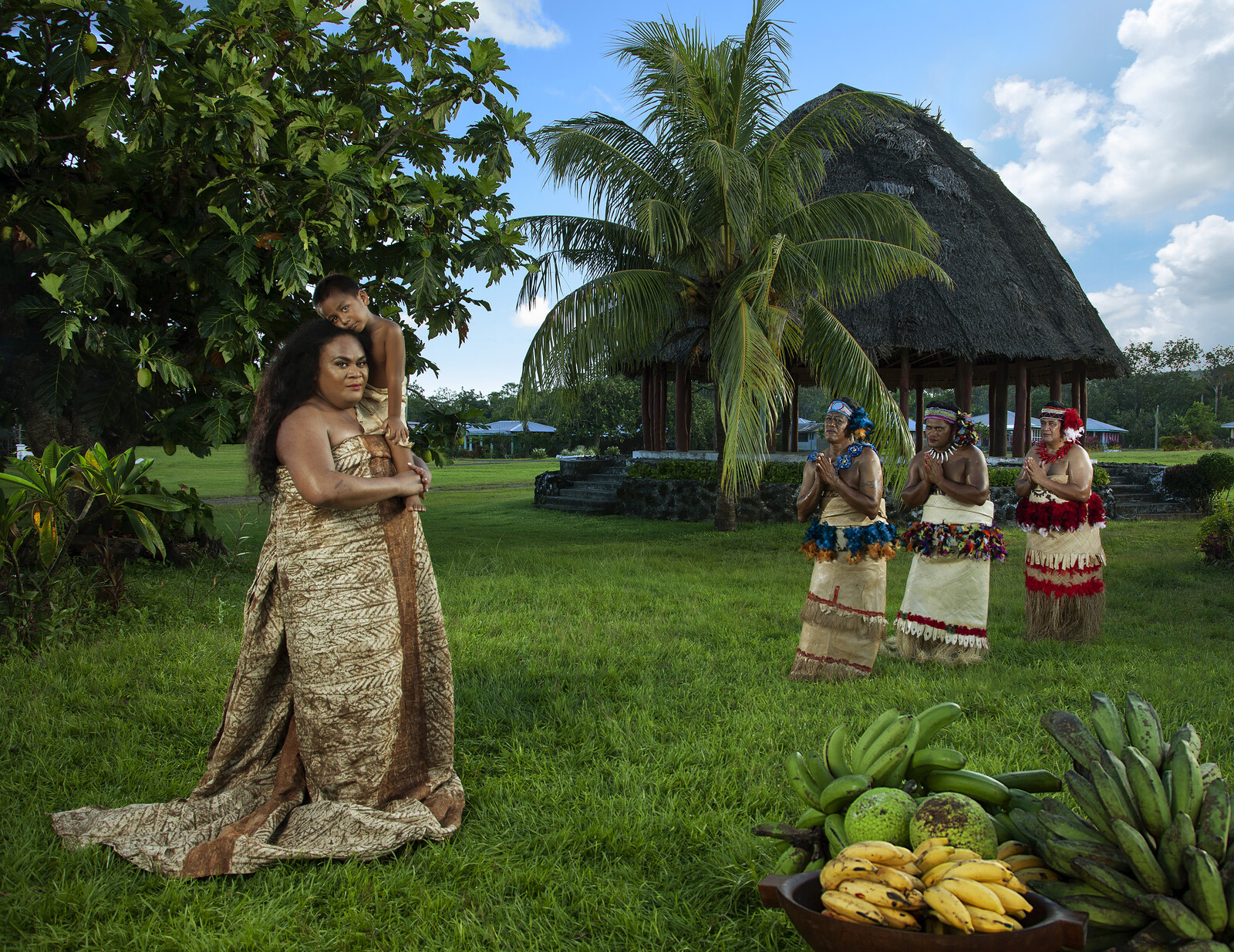Paradise Camp
April 23–November 27, 2022
Te Aro Wellington
Level 2, 2-12 Allen Street,
Wellington 6011
New Zealand
The New Zealand pavilion has unveiled Yuki Kihara’s ensemble exhibition Paradise Camp, curated by Natalie King at the 59th International Venice Biennale. Located in the Artiglierie, a central location in the Arsenale, Paradise Camp comprises 12 tableau photographs featuring a cast of Sāmoan Fa’afafine (Sāmoa’s “third gender”), repurposing and upcycling paintings by the late post-impressionist French artist Paul Gauguin that are believed to have been inspired by Sāmoa.
Shot and filmed on location in Upolu Island, Sāmoa, Kihara’s performative photography is presented against a vast wallpaper of a landscape decimated by the 2009 tsunami, and alongside First Impressions: Paul Gauguin—a five-part talk-show series commissioned by Fine Arts Museum of San Francisco and Ny Carlsberg Glyptotek, Copenhagen in 2018, where a group of Fa’afafine comment-wittily on selected Gauguin paintings.
Reflecting on the injuries of colonialism and patriarchal structures by presenting a renewed worldview that is open, inclusive, accepting and humorous, each image has a depth of meaning related to the impact of colonialism on the Fa’afafine community and western misconceptions of the Pacific. In Si‘ou alofa Maria: Hail Mary (After Gauguin), Fa’afafine activist Vaito’a Toelupe takes the role of Mary, situated in front of a traditional fale (house) that was the former residence of Paramount Chief of Sāmoa Matā’afa Iosefo, who played a pivotal role in the 19th century during the country’s colonial era. Elsewhere in the three metre long, Fonofono o le nuanua: Patches of the rainbow (After Gauguin), a group of Fa’afafine models pose riverside in bright attire. The group is also from the Aleipata Fa’afafine Association which was among the first responders to the 2009 tsunami. Inspired by the faleaitu (house of spirits) skits performed in Sāmoa, Kihara also casts herself as Gauguin in Paul Gauguin with a hat (After Gauguin). In this ingenious role reversal, Kihara is transformed via silicone prosthetics, costume, moustache and wig into the 19th century French painter who spent ten years in French Polynesia.
The exhibition also features a “Vārchive”—a term coined by Kihara that uses the Sāmoan concept of Vā to describe her relationship with her archive of research. The artist says, “My Vārchive includes personal research, rare books by 19th century explorers, colonial portraits, pamphlets, news items, a geological sculpture and activist material to provide visual links between Gauguin and Sāmoa. It provides a backstory or a living story of how Paradise Camp came into being. Through this, the archive doesn’t become storage for dead information but rather a living entity that helps to provide new meaning in the present and what it might mean in the future.”
Kihara, the first artist from New Zealand to present at the Venice Biennale who is Pasifika, Asian and Fa’afafine has spearheaded a Firsts Solidarity Network. This informal artist-led initiative comprises national pavilions which have artist/s who are a “first-time” representative from an under represented community in their respective country or their country is a first-time participant at the Venice Biennale. The Firsts Solidarity Network members include Albania, Great Britain, Poland, Nepal, New Zealand and Singapore.
A companion publication to the exhibition has been published by Thames and Hudson and edited by Natalie King. Featuring commissioned contributors from around the world, it explores the interwoven strands running through Kihara’s Paradise Camp. High-profile contributors include Cuban artist, scholar and activist Coco Fusco, Tahitian author Chantal Spitz, Sāmoan artist and writer Dan Taulapapa McMullin, renowned Gauguin scholar Professor Elizabeth Childs, Filipino curator Patrick Flores, Māori activist, Emeritus Professor and Venerable Elder Scholar Ngahuia Te Awekotuku and Paradise Camp curator, Natalie King OAM.
The 59th International Venice Biennale will open to the public from April 23 to November 27, 2022.
In 2023, Paradise Camp will tour to Powerhouse Museum, Sydney and Auckland Art Gallery Toi o Tāmaki, Auckland.
For more information visit nzatvenice.com.
For media enquires please contact charlotte [at] suttoncomms.com


